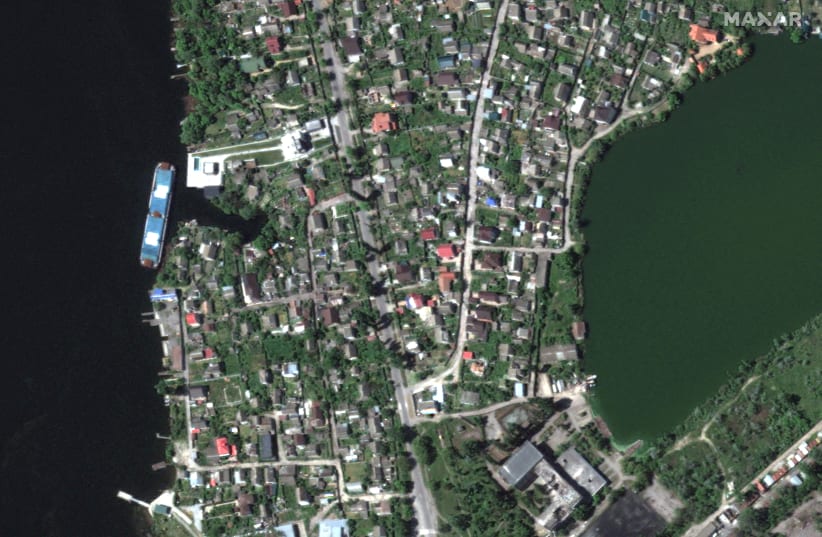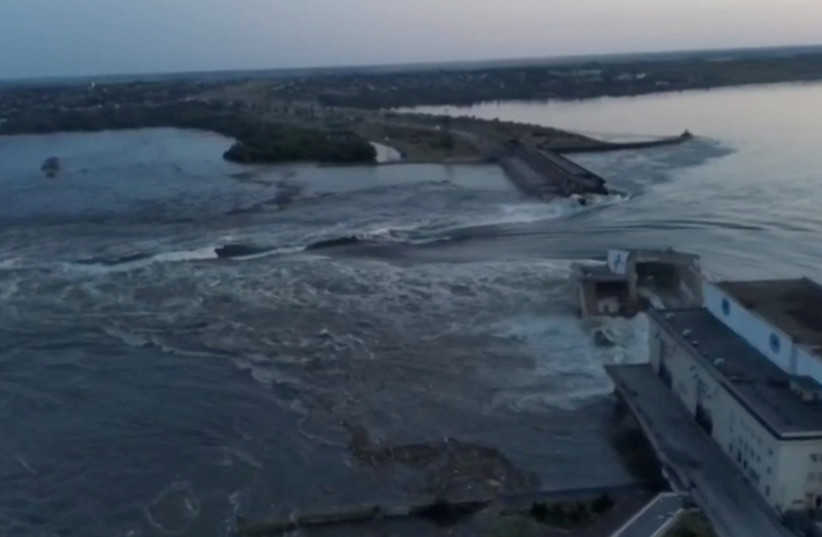Satellite images taken on Tuesday afternoon by Maxar Technologies showed extensive flooding in southern Ukraine with the region's Nova Kahkovka dam and hydroelectric station largely destroyed.
The critical dam, which lies along the Dnipro River in the parts of Ukraine's Kherson region now held by Russia, collapsed on Tuesday, flooding a swathe of the war zone along the frontline.
It was not immediately clear who was responsible.
Maxar said the images of more than 2,500 square km (965 square miles) between Nova Kakhovka and the Dniprovska Gulf southwest of Kherson city on the Black Sea, showed numerous towns and villages flooded.
"The Nova Kakhovka dam and hydroelectric plant has been largely destroyed and few structures remain," Maxar said in a statement.
The images show houses and buildings submerged in water, with many having only their roofs showing, and water taking over parks, land and infrastructure.
Ukraine said Russia had committed a deliberate war crime in blowing up the Soviet-era dam, which powered a hydroelectric station.
The Kremlin blamed Ukraine, saying it was trying to distract from the launch of a major counteroffensive Moscow says is faltering.
The dam was damaged in November following Russia's withdrawal from the Kherson city.
What is the dam and what happened - and what do we not know?
The dam, 30 meters (98 feet) tall and 3.2 km (2 miles) long, was built in 1956 on the Dnipro river as part of the Kakhovka hydroelectric power plant.
The reservoir also supplies water to the Crimean peninsula, which Russia claims to have annexed in 2014, and to the Zaporizhzhia nuclear plant, which is also under Russian control.
It holds an 18 km 3 reservoir - a volume about equal to the Great Salt Lake in the US state of Utah.
What happened at the dam?
Ukraine, which commented first, said Russia was responsible: "Russian terrorists. The destruction of the Kakhovka hydroelectric power plant dam only confirms for the whole world that they must be expelled from every corner of Ukrainian land," President Volodymyr Zelensky wrote on the Telegram messaging app.
"The Kakhovka (reservoir) was blown up by the Russian occupying forces," the South command of Ukraine's Armed Forces said. "The scale of the destruction, the speed and volumes of water, and the likely areas of inundation are being clarified."
Some Russian-installed officials blamed Ukraine:
The Russian-installed Kherson administration said Ukraine shelled the dam at around 2300 GMT, damaging the hydraulic valves.
"On Tuesday, June 6, the Ukrainian armed forces hit the Kakhovsky hydroelectric dam, as a result of which the upper part of the hydraulic structure was damaged," it said.
Other Russian-installed officials said no attack took place. Vladimir Rogov, a Russian-installed official in Zaporizhzhia, said the dam collapsed due to earlier damage and the pressure of the water. Russia's state news agency TASS carried a report to the same effect.
What is the human impact?
With water levels surging higher, many thousands of people are likely to be affected. Evacuations of civilians began on both sides of the front line.
22,000 people living across 14 settlements in Ukraine's southern Kherson region are at risk of flooding, Russian installed officials said. They told people to be ready to evacuate.
Ukrainian Prime Minister Denys Shmyhal said that up to 80 settlements were at risk of flooding.
The Russian-backed governor of Crimea said on Tuesday that there is a risk that water levels in the North Crimea Canal, which carries fresh water to the peninsula from the Dnipro river, could fall after the rupture of the dam.
The Crimean peninsula is dependent for fresh water on the canal. Ukraine previously blocked water supplies to Crimea after Russia annexed the peninsula in 2014, causing water shortages in the region.
Zaporizhzhia Nuclear Power Plant
The Zaporizhzhia Nuclear Power Plant, Europe's largest, gets its cooling water from the reservoir. It is located on the southern side, now under Russian control.
The UN nuclear watchdog, the International Atomic Energy Agency, said on Twitter it was closely monitoring the situation but that there was "no immediate nuclear safety risk at (the) plant".
Russia's state nuclear energy company Rosatom said on Tuesday there was no threat to the Moscow-controlled nuclear plant.

